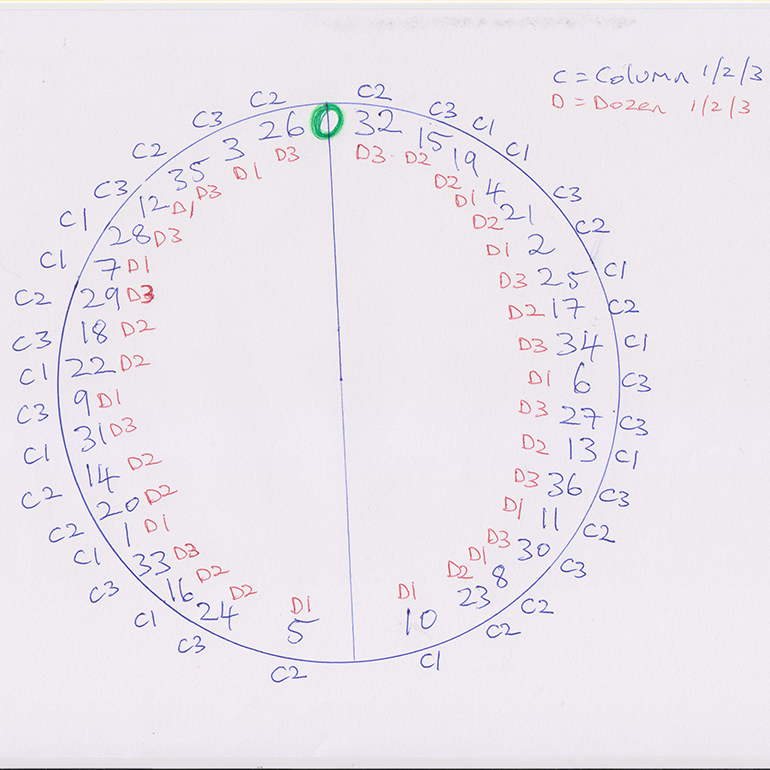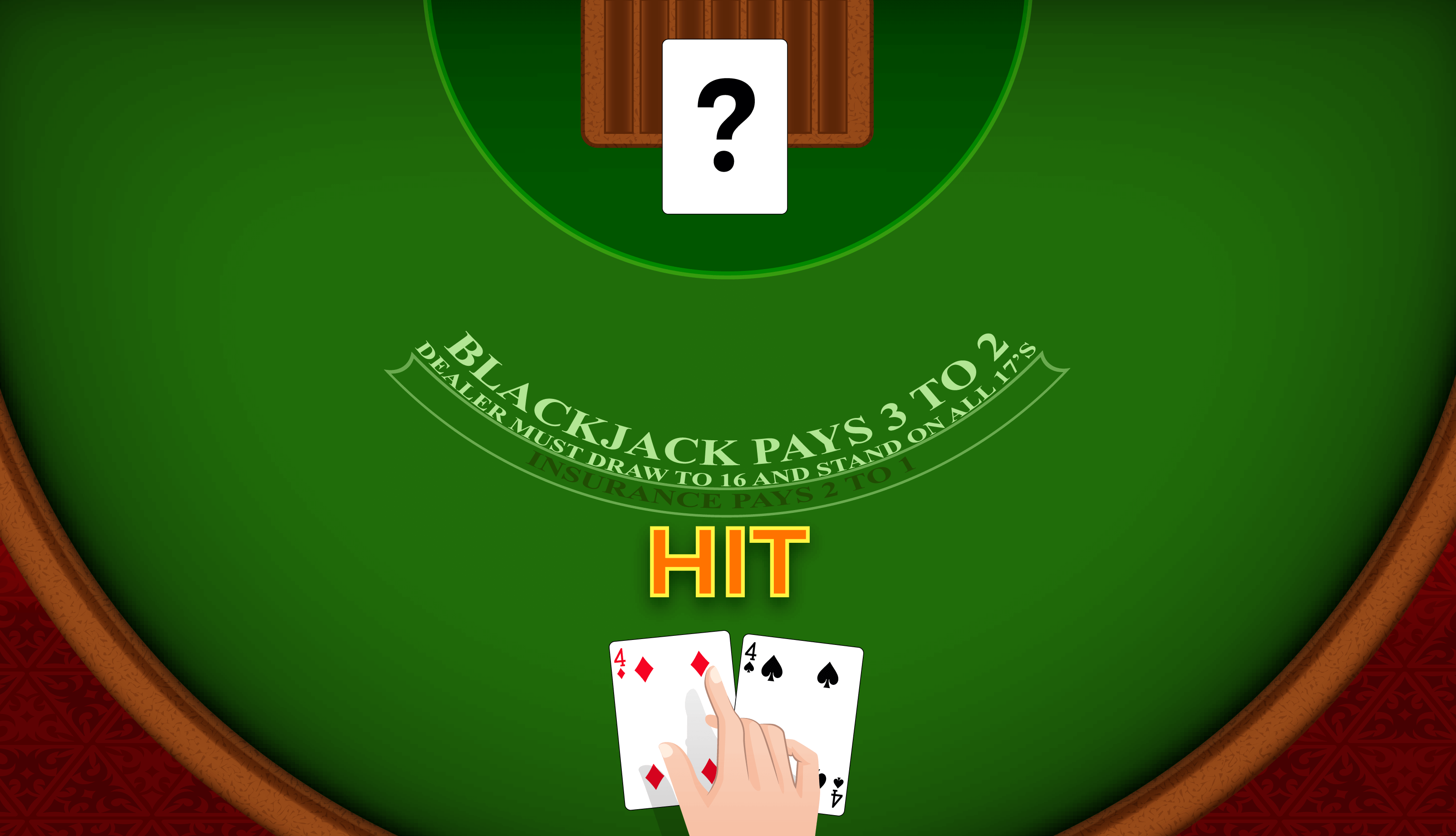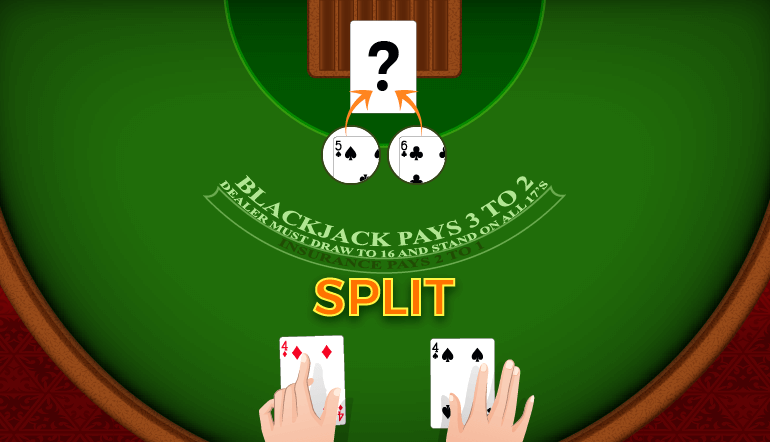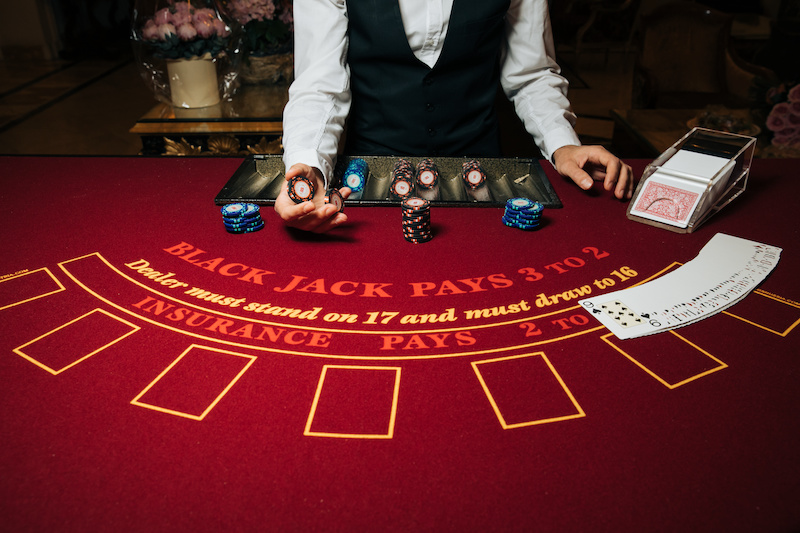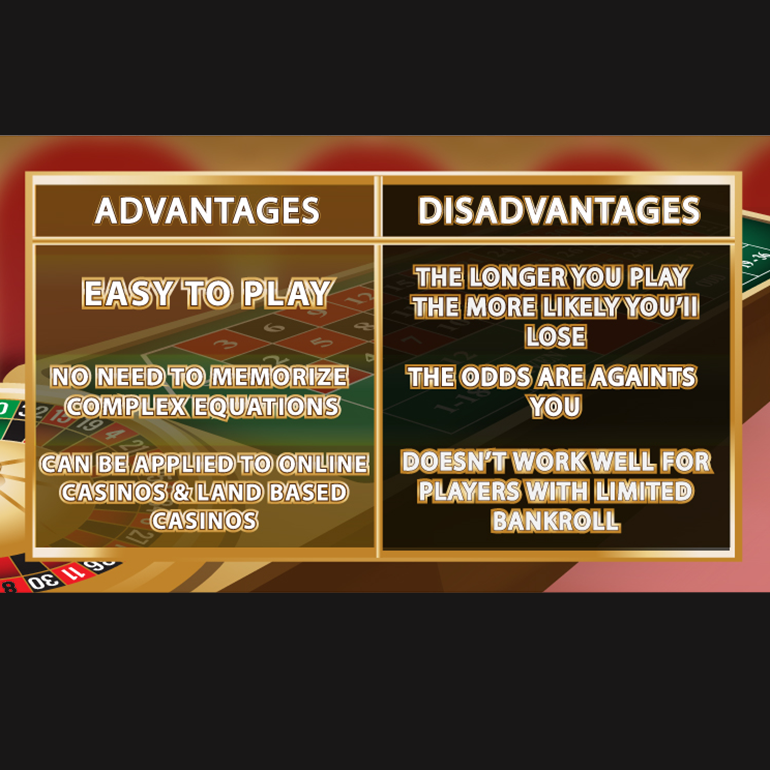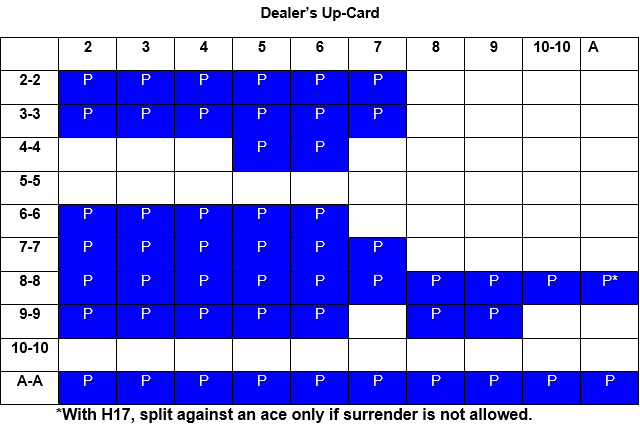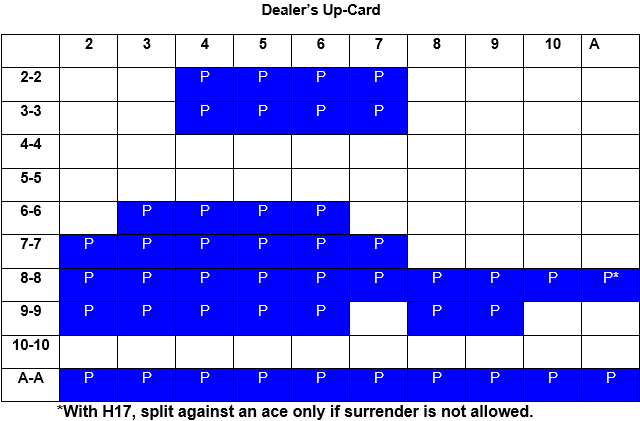There are hosts of ways to play the game of craps. Most of them call for a great number of bets, perhaps using the Pass Line, the Come bets, the Place bets of the 4, 5, 6, 8, 9, 10, and a serious number of Crazy Crapper bets including the Hardways, the C&E, the Horn, the Whirl, the Field, and all the possible combinations of single numbers straight up. In addition, with new “jackpot” type bets such as the Fire Bet, players can have a huge amount of money on the layout.
The more bets you make the more bets you have to hit in order to win and the more money the house edge gets to grind away at. In the game of craps, the house edge almost always wins.
[Please note: My mentor, the legendary, late Captain of craps, named the worst bets at the craps table as Crazy Crapper bets because you had to be crazy to make them. Such are his words to the wise! Follow his advice; you can’t go wrong.]
Go to any crowded craps table in the casino and you will see the layout covered in bets of all denominations. Some of the bets are good, some are decent but most of them are of the avoidable type; as in if you want any chance to come home ahead during any length of time you should avoid making the bad bets right now.
Sadly, the overwhelming majority of players just can’t stop making those bad bets. The game is too thrilling not to go for what these players think of as “the gusto.” Often such players wind up disgusted when the gusto doesn’t appear all that often.
Here are the best bets to make at craps:
RIGHTSIDE BETS
Meaning betting on the shooter hitting numbers and not sevening out in the point cycle of the game.
| Name of Bet | House Edge | Loss Per $100 wagered |
|---|---|---|
| Pass Line | 1.41% | $1.41 |
| Come Bet | 1.41% | $1.41 |
| Place the 6 | 1.52% | $1.52 |
| Place the 8 | 1.52% | $1.52 |
Some caveats: You will reach $100 far more often by betting the 6 or 8 since you must bet them in $6 increments. So you are betting a dollar more facing a greater house edge. This might not seem like a lot when the bets are only in the $6 range but if you bet much more you can see the impact.
For example, let us take 10 bets: A $60 Place bet of a 6 or an 8 will lose you 90 cents and 10 of these bets, which come to $600, will cost you $9.12; while a $50 Pass Line or Come bet will lose you 71 cents and 10 of these bets, which come to $500, will cost you 7.05. (I’m rounding the numbers.) The difference is pretty big. You lose about two dollars more. Think of betting in the hundreds per decision – it can get very expensive.
[Please note: The ability of the player to take the odds bets on his Pass Line or Come bets is a great option. The key idea is to make your Pass or Come bets low and to maximize the odds as best you can. This option, properly used, reduces the house edge remarkably for the player.]
THE BEST DARK SIDE BETS
You are betting against the shooter and rooting for the 7 during the point cycle of the game. Dark side players make up a very small percentage of craps players but for comparisons, here are the best Dark side bets.
| Name of Bet | House Edge | Loss Per $100 wagered |
|---|---|---|
| Don't Pass | 1.36% | $1.36 |
| Don't Come | 1.36% | $1.36 |
| Lay Bet 4 or 10* | 2.44% | $2.44 |
| Lay Bets 5 or 9* | 3.23% | $3.23 |
[Please note: The starred * Dark side bets require a five percent commission to get the house edge as low as it will go. In addition, the house edge on the Don’t Pass and Don’t Come is 1.40 percent if we do not count the no-decisions as a part of the bet. The expected loss would then be $1.40 per $100 wagered.]
The Darkside has a slight edge on the Don’t Pass and Don’t Come. Since I do not count the no-decision bets in the math, the one-tenth of one percent difference is actually not that much. The rest of the Dark side bets go increasingly higher in terms of the house edge. The more a player makes those Dark side Crazy Crapper bets the worse it is for him.
As with the Rightside bettors, it is best to make your Don’t Pass and Don’t Come bets low and maximize the odds as best you can afford. You should avoid the other bets as they are essentially a waste of money. You are looking to win money and not have a false pleasure of seeing your Darkside bets on many numbers.
THE SAVVY RIGHTSIDER
I strongly recommend that all players make use of the Captain’s 5-Count before placing any wagers. By doing so, you will eliminate about half of the shooters from any betting consideration. The 5-Count cannot give you a mathematical edge over the casino but it can get rid of many players and leave you free to bet the ones who make it past the 5-Count. Saving money is a good step in trying to make money. An hour playing the 5-Count will save you about 50 percent of your expected losses. And that’s good!
So making the best bets and using the 5-Count is a great craps strategy.
[Please note: In a future issue I will get into more detail about the 5-Count. However, I have an extensive discussion of it in my book I Am a Dice Controller. To me it is the best technique for deciding upon whom you will wager.]
CURRENT CRAPS CONTROVERSY: THE ONE BET TECHNIQUE
Here is where many of you who are craps aficionados will take issue with me; I recommend only making one bet against one player. If that bet wins, you can make another against this shooter.
So you have a Come bet on a number and it hits. Now you are given your payout and the return of your bet. You can now make another Come bet. But you only go with one bet at a time. And one more and one more as long as you keep winning that one bet over and over. You are not to mimic the other players who are making many bets.
And here is the next point of possible contention: All your bets must be either a Pass Line (with odds) or a single Come bet (with odds). You are not going to use any Place bets and you certainly are not going to make any other bets such as the Crazy Crapper ones.
Here is how it will go: When the 5-Count is reached, you will place either a Pass Line bet (meaning the shooter just made his point) or a Come bet. When they get up on a number, you take the odds. If such a bet loses on the first placement (meaning a 2, 3 or 12 rolled), you will replace the bet. You always want one bet going.
Let me do a quick summation:
• Bet Pass or Come only
• Once on a number take the odds
• Shooter hits 2, 3 or 12, replace the Pass or Come bet
• If shooter hits a 7 or 11, keep the bet up (unless it is a seven-out)
• If the shooter hits your number then make another Pass or Come bet
• Always bet low on Pass and Come; take as much as you can afford in odds
WHY ONE BET IS THE BEST BET
Many craps players make a minimum of three bets, while others will go the route, making many bets, usually a combination of good ones and bad ones. Think about this. Is it such a good idea making more than one bet?
It isn’t.
The casino edge works best over time or number of decisions. Just look around the casino next time you visit and see all those people playing all those table games and machines. All those decisions will put the casino in the driver’s seat. And the more decisions a single player experiences the more likely he will be a loser.
Keeping those losses low can only be done by betting one bet – a good bet! – and thus you will not be giving the casino as much time as you would if you bet multiple bets.
[Please note: A good rule of thumb is to understand that the number of decisions is the key variable in playing any casino game. One player betting one bet will have very few decisions against the house – meaning his time against the house edge will not be as lethal as the player who makes multiple bets.]
THE ONE BET DARK SIDER
There is a slight difference in my recommendation for one bet on the Dark side. You only make a Don’t Come bet, not a Don’t Pass bet. There is a subtle reason why I recommend this: On the Don’t Pass you can get hammered if the 7 appears over and over, as it sometimes does. The tendency will be to keep putting up more Don’t Pass bets in such a case. (The 11 can do the same thing, although obviously not as often.)
On the Don’t Come if the 7 appears the shooter goes down to defeat and your one bet is the only bet lost. On the appearance of the 11, well, there you have to use discipline not to keep putting up more and more bets should the 11 happen in succession. Give yourself one loss and then do not bet anymore.
THE DIFFERENCE BETWEEN RIGHTSIDE AND DARK SIDE SINGLE BETS
The reason I treat the one Rightside bet differently from the one Dark side bet has to do with the nature of the first placement. On the Rightside a 7 or 11 is a winner for the player. He has eight chances to win on the 7 and 11 and only four ways to lose on the 2, 3 or 12. On the Dark side, the very first placement has the house edge written all over it. The Dark sider loses eight decisions on the 7 and 11 but only wins three decisions should the 2 or 3 appear. Remember if the 12 appears it is a no decision for the Dark sider. The Dark sider’s dangerous dilemma is getting by that first placement.
SO WHAT DO I DO WHEN I PLAY?
The big question I had to answer when I decided to go the one-bet approach was whether I would only make one bet on me. I enjoy shooting the dice and my craps-playing career is defined by my own rolls with some exceptions.
So I decided I’d put my money on myself by starting out with three bets; my Pass Line and two Come bets with odds when these bets were up on a number. You catch my drift; I’m making me the determining factor in my craps-playing career.
In addition I bet much more money on myself than I do on other shooters. Each of my three bets will be about three times more than I bet on other rollers – meaning I am betting between nine and 10 times more money on myself. If I win I win; if I lose I lose. I don’t blame other shooters for my losses. I try to put my play on me and no one else.
If you have confidence in your shooting ability then you might want to take a page from me – but don’t think you are a good shooter if you’re not. Casino craps play has many people thinking they are better than they actually are. You have to be honest with yourself. One bet on you when you shoot is no sin. If you aren’t a great shooter then treat yourself as you would any other shooter.
All the best in and out of the casinos!


